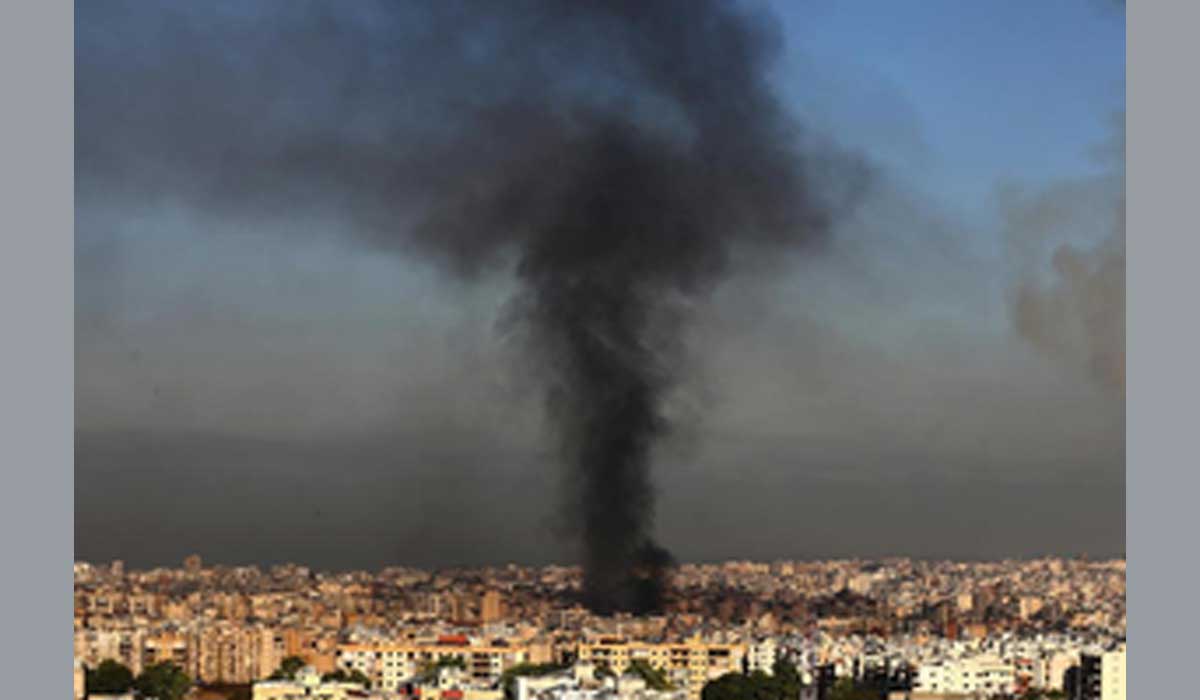Hezbollah Media Chief Mohammad Afif Killed in Israeli Airstrike on Beirut
Israeli Airstrike in Central Beirut Claims Lives, Including Hezbollah Media Chief Mohammad Afif, Amid Escalating Regional Tensions

Beirut, Lebanon – Hezbollah Media Chief Mohammad Afif Killed In a dramatic escalation of the ongoing conflict between Israel and Hezbollah, an Israeli airstrike on Sunday noon targeted the office of Syria’s Ba’ath Party in central Beirut, resulting in the death of Hezbollah Media Chief Mohammad Afif and three others, as reported by local TV channel al-Jadeed.
This development comes amid heightened tensions in the region, further intensifying the already precarious situation. Below, we delve into the details of the attack, its implications, and the broader context of the escalating conflict.
Details of the Airstrike
The airstrike, carried out by Israeli warplanes, targeted the building located between the Ras al-Nabaa area and the bustling Sodeco Square commercial center. According to al-Jadeed, the building was hit with two precision air-to-surface missiles after the Israeli army reportedly issued a warning to evacuate the premises hosting the Ba’ath Party office.
- Location of the strike: Central Beirut, near Ras al-Nabaa and Sodeco Square.
- Method of attack: Two air-to-surface missiles.
- Casualties: Hezbollah Media Chief Mohammad Afif and three others killed.
The attack left much of the targeted building in ruins. Emergency services were quick to respond, with ambulances and rescue teams arriving at the scene to search for survivors and remove debris.
Hezbollah Media Chief Mohammad Afif Killed Background of Mohammad Afif and His Role in Hezbollah
Mohammad Afif, the media chief for Hezbollah, played a pivotal role in the organization’s communication strategy. As a key figure in Hezbollah’s propaganda apparatus, Afif was responsible for crafting the group’s media narratives, disseminating information, and coordinating with journalists.
His death is a significant blow to Hezbollah, not only due to his influence but also because it signals Israel’s focused strategy of targeting key figures within the group.
Israel’s Intensified Air Campaign
This attack is part of Israel’s broader campaign of airstrikes targeting Hezbollah and allied positions in Lebanon. Since September 23, 2023, Israel has escalated its operations in the region, with intensified airstrikes and a ground offensive launched in early October across its northern border into Lebanon.
Key Events Leading Up to the Strike:
- September 2023: Israeli airstrikes on Hezbollah positions increased.
- October 8, 2023: Ground operations began along Israel’s northern border.
- November 12, 2023: Airstrike on the Ba’ath Party office in Beirut, killing Mohammad Afif.
Impact of Israeli Strikes on Lebanon
The ongoing Israeli military operations have had devastating consequences for Lebanon.
Casualty Figures (as of November 2023):
- Deaths: 3,452 (reported by the Lebanese health ministry).
- Injuries: 14,664 individuals wounded.
The repeated airstrikes have severely affected civilian infrastructure, displaced thousands and causing widespread destruction. Humanitarian agencies have expressed concerns about the growing toll on civilians, particularly as urban areas like Beirut become focal points of attacks.
Hezbollah Media Chief Mohammad Afif Killed Geopolitical Implications
The killing of Mohammad Afif underscores the deepening crisis between Israel and Hezbollah, with broader implications for the region.
Hezbollah’s Role in the Conflict:
Hezbollah has long been a critical actor in the Middle East’s geopolitical landscape, aligning closely with Iran and Syria. Israel views Hezbollah as a direct threat to its security, particularly given the group’s arsenal of rockets and its influence in southern Lebanon.
Regional Tensions Escalating:
- Lebanon’s Stability: Lebanon continues to face political and economic turmoil, further exacerbated by the conflict.
- Iran-Israel Proxy War: The strikes highlight the proxy nature of the conflict, with Iran-backed Hezbollah and Israel locked in a prolonged confrontation.
What’s Next for Lebanon?
The recent escalation raises questions about Lebanon’s future and the potential for a broader regional conflict. As international mediators call for restraint, the civilian toll and destruction continue to mount.
Possible Scenarios:
- Increased International Pressure: The international community may push for ceasefires or peace negotiations.
- Hezbollah Retaliation: Hezbollah could escalate its own operations, leading to a cycle of retaliatory violence.
- Humanitarian Crisis: Prolonged conflict will deepen Lebanon’s existing humanitarian crisis, with millions at risk of displacement and lack of resources.
Global Reactions
The attack has drawn widespread attention from global powers. Many nations have called for restraint and urged both sides to prioritize de-escalation to prevent further loss of life.
- United Nations: Urged for immediate ceasefire and humanitarian aid to affected areas.
- Neighboring Countries: Concerned about the spillover effects of the conflict.
Conclusion
The killing of Hezbollah Media Chief Mohammad Afif in an Israeli airstrike marks a turning point in the escalating conflict. As the situation unfolds, the focus must remain on safeguarding civilian lives and finding avenues for lasting peace in the region.
The international community faces a critical challenge: addressing the underlying causes of the conflict while mitigating its devastating impact on Lebanon and its people.
